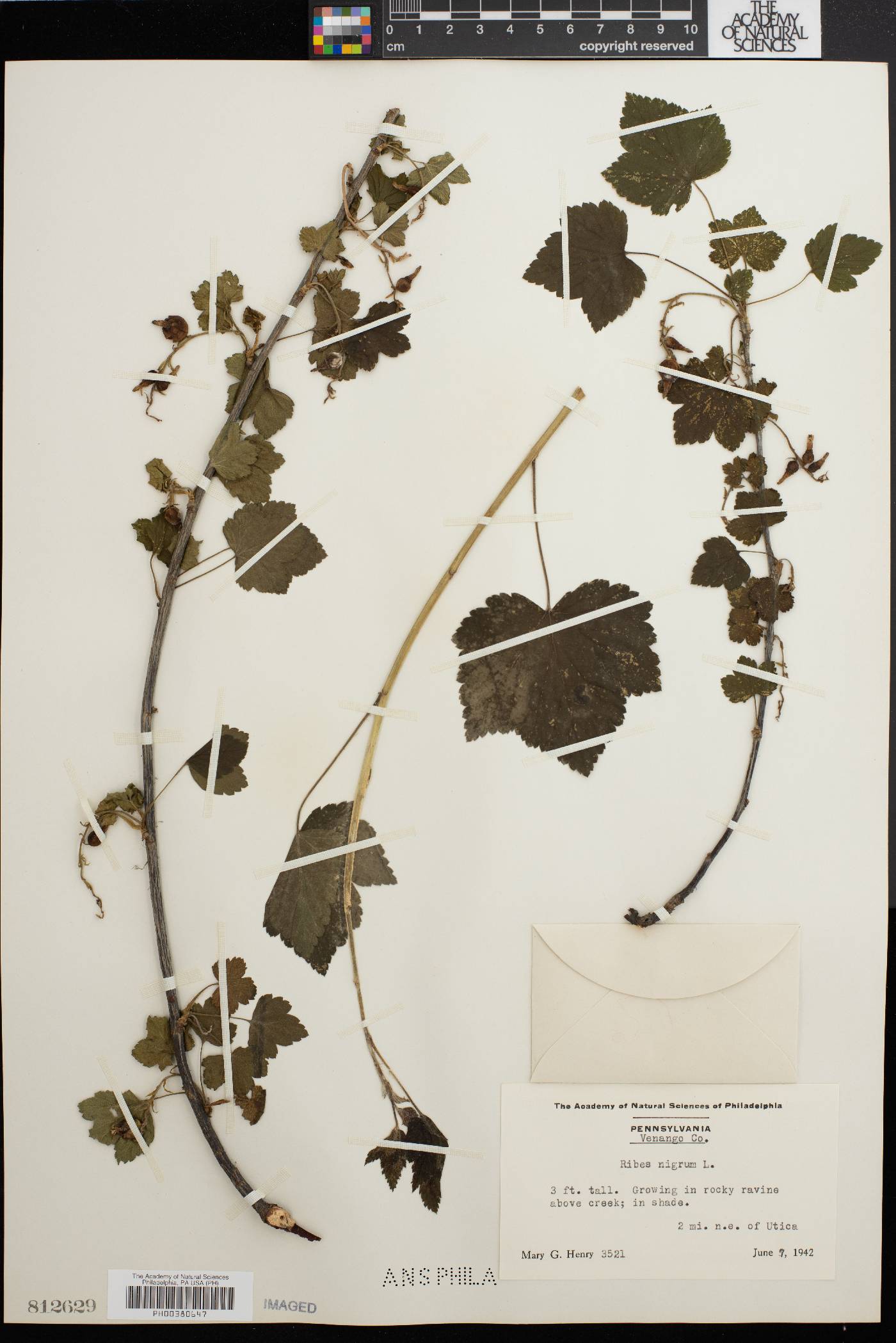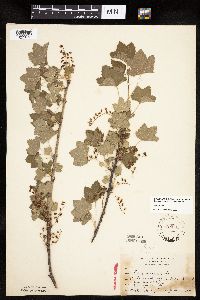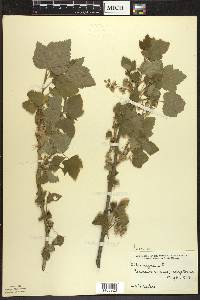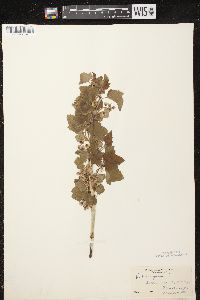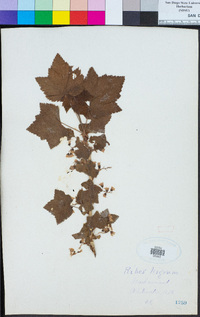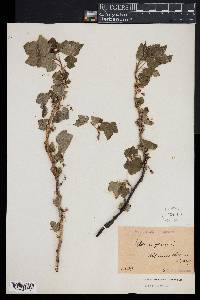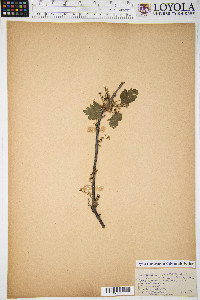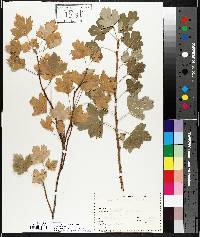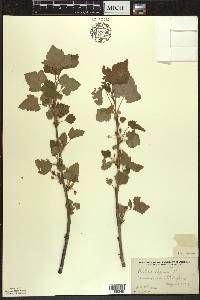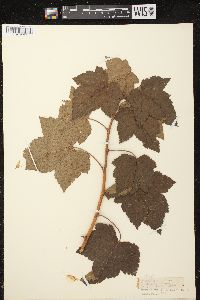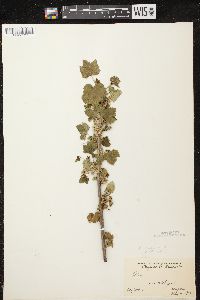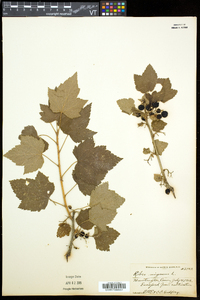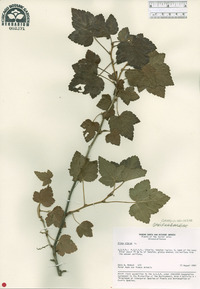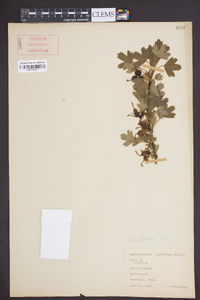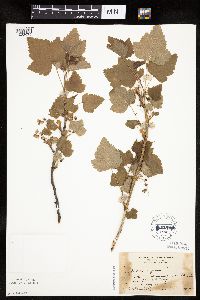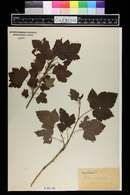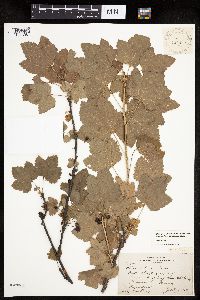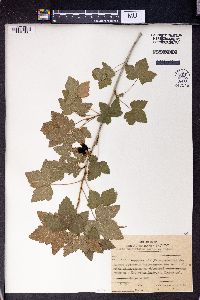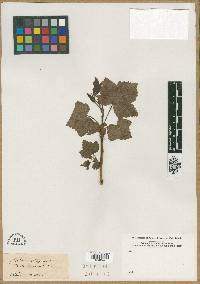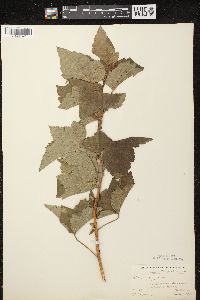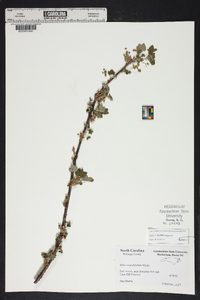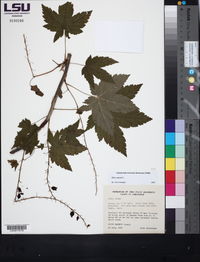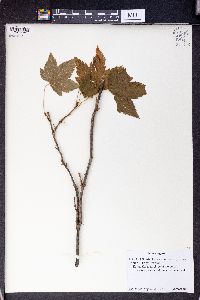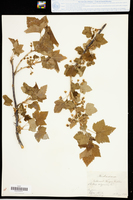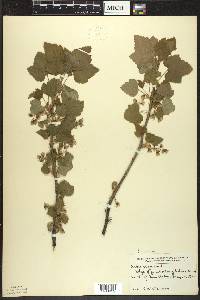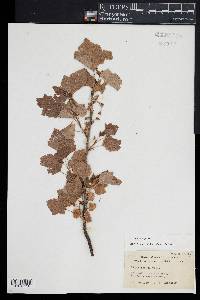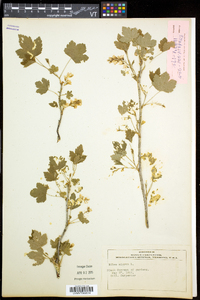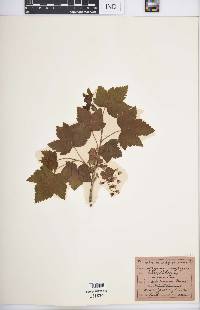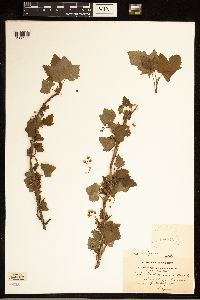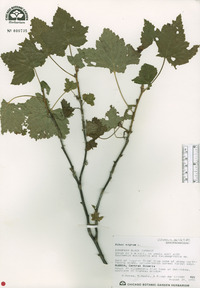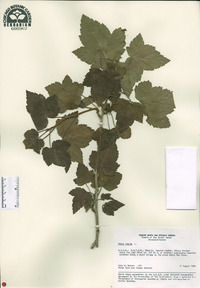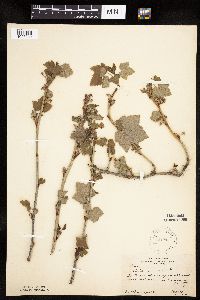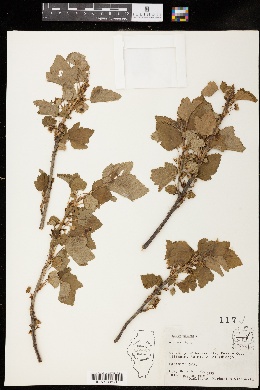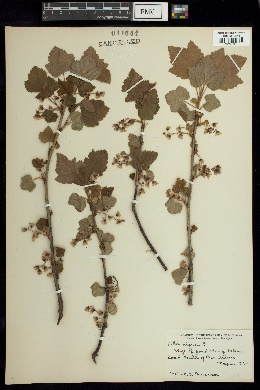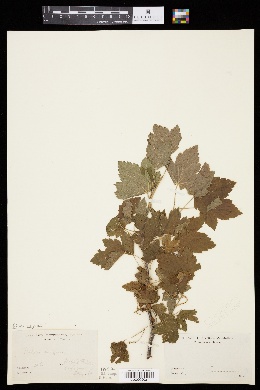
|
|
|
|
Family: Grossulariaceae
European Black Currant
[Ribes pauciflorum Turcz. ex Ledeb.] |
Plants 1-2 m. Stems erect, glandular and puberulent or nearly glabrous; spines at nodes absent; prickles on internodes absent. Leaves: petiole 1-4 cm, pubescent, sometimes with longer setose hairs basally; blade reniform, 3-5-lobed, cleft nearly to midrib, 5-10 cm, base cordate, surfaces with shiny, resinous glands, lobes broadly ovate, margins irregularly serrate, apex acute. Inflorescences pendent, 4-10-flowered racemes, 3-5 cm, axis pubescent, flowers evenly spaced. Pedicels jointed, 2-10 mm, glabrous or finely pubescent to lanate; bracts ovate, 0.5-2 mm, pubescent. Flowers: hypanthium green, cup-shaped or short-campanulate, 3-4 mm, densely pubescent or tomentose; sepals not overlapping, reflexed, greenish or pinkish abaxially, suffused with purple adaxially, oblong, 5-7 mm; petals nearly connivent, erect, white to reddish, bluntly deltate, not conspicuously revolute or inrolled, 1.5-3 mm; nectary disc prominent, green or purplish, circular, covering ovary; stamens slightly longer than petals; filaments linear, 2-2.5 mm, glabrous with some glands; anthers white, sagittate, 1 mm, apex blunt; ovary pubescent, sessile-glandular; styles connate nearly to stigmas, 3 mm, very finely hairy. Berries sweet-tasting, black, globose, 12-15 mm, glabrous with some sessile glands. Flowering May-Jun. Wet meadows, disturbed streamsides, anthropogenic habitats; 100-300 m; introduced; N.B., Nfld. and Labr. (Nfld.), N.S., Ont., P.E.I., Que.; Conn., Ill., Maine, Md., Mass., Mich., Minn., N.H., N.J., N.Y., Ohio, Vt., Wis.; Eurasia. Ribes nigrum is the source of the cultivated black currant. It has a strong, unpleasant odor.
Shrub to 2 m tall Leaves: alternate, stalked, 5 - 10 cm wide, palmately three- to five-lobed, nearly round with a heart-shaped base, palmately veined, toothed, with a few hairs and yellow, resinous dots beneath. Stalk hairy. Inflorescence: a small, drooping cluster (raceme) of four to ten flowers. Flowers: greenish and dull white, greenish purple within. Stalk 2 - 8 mm long, longer than the tiny, egg-shaped bracts. Stamens five. Styles two, divided. Sepals: forming a five-lobed tube (calyx). Calyx greenish and dull white, greenish purple within, 5 - 6 mm long, broadly bell-shaped, and hairy. Lobes recurved, oblong. Petals: five, in the throat of the calyx tube, nearly half as long as calyx lobes, alternate with calyx lobes. Fruit: a juicy berry, many-seeded, crowned by the shriveled calyx, black, nearly spherical. Branches: upright, rather stout, without spines. Similar species: The similar Ribes rubrum and R. triste differ by having red berries and leaves without resinous dots. Ribes americanum is also similar but has longer (8 - 10 mm), tubular bell-shaped, hairless calyxes. Flowering: May to June Habitat and ecology: Introduced from Eurasia. A rare escape from cultivation. Occurence in the Chicago region: non-native Etymology: Ribes comes from the Arabic name for a shrub that has acidic fruit. Nigrum means black. Author: The Morton Arboretum Erect, unarmed shrub; lvs 3-5-lobed to about the middle, dotted with resinous glands beneath; racemes drooping; pedicels 2-8 mm, much exceeding the minute, ovate bracts; hypanthium above the ovary short-campanulate; sep greenish-purple within; ovary commonly with sessile resinous glands; fr black; 2n=16. Native of Eurasia, occasionally escaped from cult. Gleason, Henry A. & Cronquist, Arthur J. 1991. Manual of vascular plants of northeastern United States and adjacent Canada. lxxv + 910 pp. ©The New York Botanical Garden. All rights reserved. Used by permission. |
This project was made possible in part by the Institute of Museum and Library Services [MG-70-19-0057-19].
Powered by Symbiota

